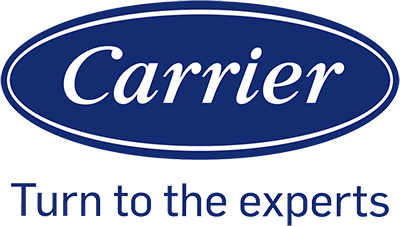When we think about saving energy at home, we often look at appliances or insulation, but the ductwork hidden behind our walls plays a big role too. Dust, debris, and buildup inside ducts make heating and cooling systems work harder than they should. Clean ducts help reduce energy use by allowing air to flow more efficiently through the system.

By keeping ducts clear, we support better airflow and reduce strain on our HVAC equipment. This not only lowers energy bills but also helps extend the life of the system. Clean ducts also connect to another important factor i.e. indoor air quality which affects comfort and health in daily life.
As we explore how duct maintenance impacts energy consumption, we can also look at practical ways to keep ducts in good condition and when it makes sense to call in professionals. This gives us a clear path to improving efficiency and making our homes more comfortable.
How Clean Ducts Impact Home Energy Consumption
Clean air ducts help us use less energy by improving airflow, reducing strain on the HVAC system, and preventing unnecessary energy loss. When ducts stay free of dust and blockages, our heating and cooling system can operate more efficiently and keep energy costs lower.
Relationship Between Duct Cleanliness and Energy Efficiency
When ducts collect dust, dirt, and debris, the HVAC system must work harder to move air through the home. This extra effort increases energy consumption and reduces energy efficiency. Clean ducts allow air to flow smoothly, which helps the system run closer to its intended performance.
We can see the difference in energy bills. Dirty ducts often lead to higher utility bills because the system uses more power to achieve the same level of comfort. Clean ducts reduce this strain and improve energy savings over time.
Another key point is air distribution. Uneven airflow caused by buildup in ducts makes some rooms harder to heat or cool. When ducts are clean, air distribution is more balanced, which reduces wasted energy and improves comfort in every part of the home.
Airflow and HVAC System Performance
Airflow directly impacts how well our heating and cooling system performs. Restricted airflow forces the system to run longer cycles, which increases wear and raises energy costs. Clean ducts maintain steady airflow, making the system more effective and efficient.
Poor airflow can also cause the HVAC system to overheat or freeze up, depending on whether we are using heating or cooling. This not only uses more energy but can also shorten the lifespan of the equipment. Clean ducts help prevent these issues.
We should also note that proper airflow reduces the need for frequent adjustments to the thermostat. When air moves freely, the system reaches the set temperature faster, which lowers overall energy consumption and helps us save on utility bills.
Energy Loss Due to Dirty or Blocked Ducts
Dirty or blocked ducts cause energy loss by reducing how much conditioned air reaches each room. Air leaks or heavy buildup force the HVAC system to push harder, which wastes energy and increases costs.
Even small blockages can reduce efficiency. For example, dust buildup around vents or registers can restrict airflow enough to make the system cycle longer. This extra run time raises energy bills and lowers HVAC system efficiency.
We also lose energy when ducts develop leaks or gaps. Conditioned air escapes before it reaches the living space, which means the system must produce more heating or cooling to make up for the loss. Clean and sealed ducts reduce this waste and help maintain lower energy bills.
The Connection Between Clean Ducts and Indoor Air Quality
Clean ducts help limit the spread of dust, allergens, and pollutants in the air we breathe. They also reduce the chance of mold and bacteria growth, which supports healthier indoor spaces and lowers the risk of respiratory issues.
Reduction of Dust, Allergens, and Pollutants
When ducts stay clean, less dust and debris circulate through our home. This reduces the buildup of particles like pollen, pet dander, and other allergens that often settle in vents. Cleaner airflow means fewer triggers for people sensitive to poor indoor air quality.
Pollutants can enter ducts from outside air, household cleaning products, or even cooking fumes. If ducts are clogged, these particles spread more easily into each room. By removing this buildup, we improve ventilation and keep air fresher.
A clean duct system also helps our HVAC filters work more effectively. Filters last longer and trap smaller particles when ducts are free of heavy dust. This creates a more consistent level of indoor comfort with fewer airborne irritants.
Health Benefits for Allergy and Asthma Sufferers
People with allergies or asthma often notice symptoms worsen when air contains high levels of dust, pollen, or pet dander. Clean ducts lower these triggers and make it easier to manage daily breathing.
Asthma symptoms, such as coughing or wheezing, can flare when pollutants circulate indoors. By keeping ducts clear, we reduce the spread of irritants that cause respiratory issues. This helps create a healthier environment for sensitive family members.
For allergy sufferers, less dust and fewer allergens in the air means fewer sneezing fits, headaches, or itchy eyes. Clean ducts support better sleep and comfort since the air remains more stable and less contaminated.
Prevention of Mold and Bacteria Growth
Moisture inside ducts creates a risk for mold spores and bacteria. Once mold takes hold, it can spread quickly through ventilation, leading to visible mold growth and musty odors. Clean ducts reduce these risks by removing debris where moisture might settle.
Mold and bacteria in ducts can worsen respiratory issues and trigger allergic reactions. Regular cleaning helps stop these harmful particles from circulating through the home.
By controlling moisture and keeping ducts free of buildup, we prevent the growth of unwanted organisms. This improves indoor air quality and supports a safer, more comfortable living space.
Duct Maintenance Strategies for Energy Conservation
We can lower energy use in our homes by keeping ductwork clean, sealed, and supported with proper air filters and registers. Each step helps reduce wasted airflow, improve system performance, and extend the life of heating and cooling equipment.
Importance of Regular Duct Cleaning
Dust, debris, and pet dander often collect inside air ducts over time. This buildup restricts airflow and forces the HVAC system to work harder, which increases energy consumption. Regular air duct cleaning helps restore proper airflow and keeps the system running more efficiently.
Professional duct cleaning services use specialized tools to remove dirt from supply ducts, return ducts, and the plenum. These tools reach areas that are not accessible with normal household cleaning. Hiring duct cleaning companies every few years can make a noticeable difference in airflow and indoor air quality.
We should also look for signs that duct cleaning is needed. Common indicators include visible dust around registers, reduced airflow from vents, or musty odors when the system runs. Addressing these issues early helps prevent bigger problems with energy use and comfort.
Duct Sealing to Prevent Air Leaks
Leaky ductwork is one of the most common causes of wasted energy in homes. Air leaks allow conditioned air to escape into attics, basements, or crawl spaces instead of reaching living areas. This forces the HVAC system to run longer and use more electricity or fuel.
We can reduce this waste by sealing air leaks with mastic sealant or metal-backed tape. Duct sealing prevents air leakage at joints, seams, and connections. It is especially important to check areas near the plenum and major duct branches, where leaks often occur.
A duct sealing project can be done by homeowners for small gaps, but larger systems may need professional help. Many duct maintenance companies offer sealing as part of their services, which can improve energy conservation and comfort in every room.
Role of Air Filters and Registers
Air filters keep dust and debris from entering the duct system. When filters clog, airflow drops and the HVAC system must work harder. Replacing or cleaning filters every 1–3 months is one of the easiest ways to maintain duct efficiency.
Registers also play a role in duct maintenance. Blocked or closed registers restrict airflow, which increases pressure in the ducts and can lead to air leaks. Keeping registers clear of furniture and dust helps air move freely through the system.
We should also match the right filter type to our system. High-efficiency filters capture more particles but can reduce airflow if not designed for the unit. Choosing the correct filter and keeping registers open ensures balanced airflow, better energy conservation, and longer system life.
Choosing Professional Services for Optimal Results
We need to think carefully about who cleans our ductwork and how the job is done. The right choice can improve airflow, keep energy use lower, and help us follow safe standards.
Evaluating Duct Cleaning Companies
When we look at duct cleaning companies, we should check their training, certifications, and equipment. A reliable company often belongs to trade associations and follows industry standards. Asking about their process helps us know if they use proper tools instead of shortcuts.
It helps to compare services side by side.
| Factor | What to Look For | Why It Matters |
|---|---|---|
| Certifications | NADCA or similar credentials | Shows training and knowledge |
| Equipment | High-powered vacuums, brushes, cameras | Ensures ducts are cleaned effectively |
| References | Customer reviews or referrals | Confirms company track record |
| Pricing | Clear, itemized estimates | Avoids hidden fees |
We should also ask if the company checks for leaks or problems with ductwork installation. Cleaning alone may not solve airflow issues if ducts are poorly sealed or damaged.
Professional vs DIY Duct Cleaning
Some homeowners consider cleaning ducts themselves, but professional air duct cleaning usually gives better results. Professionals use specialized vacuums and rotary brushes that reach deep into the ductwork. Most homes do not have access to this type of equipment.
DIY methods often only clean what is visible. Using a household vacuum or basic tools may remove surface dust but leaves buildup deeper inside. This can limit airflow and reduce efficiency.
We also face safety risks when we attempt the work ourselves. Sharp edges inside ducts and possible exposure to mold or debris can create problems. Hiring trained technicians reduces these risks and ensures the entire system is cleaned.
EPA Guidelines and Best Practices
The U.S. Environmental Protection Agency (EPA) does not recommend routine duct cleaning for all homes. Instead, they suggest cleaning only when there is visible mold, pests, or heavy buildup of dust and debris. This guidance helps us avoid unnecessary costs.
The EPA also stresses the importance of proper ductwork installation and maintenance. Poorly sealed ducts waste energy even if they are clean. We should make sure companies inspect for leaks and recommend sealing when needed.
Following EPA best practices means choosing services that focus on both cleanliness and efficiency. A thorough job includes cleaning registers, coils, and fans, not just the ducts themselves. This approach helps us get the most benefit from professional cleaning.




